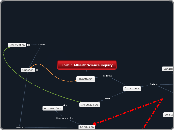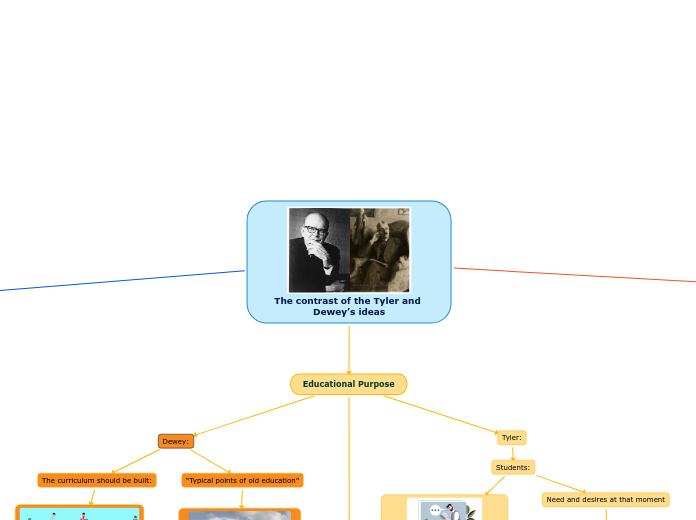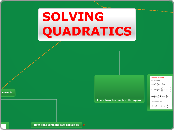References: Figure 1. Retrieved January 28, 2020 from: (https://www.google.com/search?q=intersecting+slopes+in+math&source=lnms&tbm=isch&sa=X&ved=2ahUKEwij8OmwsKfnAhWrhOAKHTZ-BYMQ_AUoAXoECA0QAw&biw=1280&bih=698#imgrc=vF0PmoszlJStYM)
Figure 2. Retrieved January 28, 2020 from: (https://www.algebra.com/algebra/homework/Linear-equations/Linear-equations.faq.question.102253.html)
Figure 3. Retrieved January 28, 2020 from: https://www.google.com/search?q=slope+in+math&source=lnms&tbm=isch&sa=X&ved=2ahUKEwjugYLGu6znAhXHPM0KHVX6AJoQ_AUoAXoECA4QAw&biw=1280&bih=698#imgrc=IIZqz04OEHgVPM Grade 8 Mathematics Curriculum found at http://www.edu.gov.on.ca/eng/curriculum/elementary/math18curr.pdf Grade 9 Mathematics Curriculum found at http://www.edu.gov.on.ca/eng/curriculum/secondary/math910curr.pdf Grade 10 Mathematics Curriculum found at http://www.edu.gov.on.ca/eng/curriculum/secondary/math910curr.pdf
Solving Perpendicular Lines
Representations
Graph
"The question does not ask us to graph the equation, but here is the graph: Figure 4. Example of the final graph of the equation y= -⅓ x + 4.33."
"construct tables of values and graphs,using a variety of tools (e.g.,graphing calculators, spreadsheets,graphing software,paper and pencil),to represent linear relations derived from descriptions of realistic situations" Retrieved from the grade 10 mathematics curriculum found at http://www.edu.gov.on.ca/eng/curriculum/secondary/math910curr.pdf Grade 9, page 42.
Use of Models
"T: Great work! Let’s write this equation out together now. Start with Y= (m) which in this equation is -⅓ x + and what is b again?"
"Figure 4. Example of the final graph of the equation y= -⅓ x + 4.33."
"express a linear relation as an equation in two variables,using the rate of change and the initial value" Retrieved from the grade 10 mathematics curriculum found at http://www.edu.gov.on.ca/eng/curriculum/secondary/math910curr.pdf Grade 9, page 42.
"Figure 3. Example of positive slope on a graph plotted on the x and y axis. Retrieved January 28, 2020 from: https://www.google.com/search?q=slope+in+math&source=lnms&tbm=isch&sa=X&ved=2ahUKEwjugYLGu6znAhXHPM0KHVX6AJoQ_AUoAXoECA4QAw&biw=1280&bih=698#imgrc=IIZqz04OEHgVPM"
"Figure 2. Example of graph to plot the points on the x and y axis. Retrieved January 28, 2020 from: (https://www.algebra.com/algebra/homework/Linear-equations/Linear-equations.faq.question.102253.html)"
"identify,through investigation,some properties of linear relations (i.e.,numerically, the first difference is a constant,which represents a constant rate of change; graphically,a straight line represents the relation),and apply these properties to determine whether a relation is linear or non-linear." Retrieved from the grade 10 mathematics curriculum found at http://www.edu.gov.on.ca/eng/curriculum/secondary/math910curr.pdf Grade 9, page 42.
"Figure 1. Example of positive and negative slopes on a graph. Plotting the points on the x and y axis to display the slopes intersecting. Retrieved January 28, 2020 from: (https://www.google.com/search?q=intersecting+slopes+in+math&source=lnms&tbm=isch&sa=X&ved=2ahUKEwij8OmwsKfnAhWrhOAKHTZ-BYMQ_AUoAXoECA0QAw&biw=1280&bih=698#imgrc=vF0PmoszlJStYM)"
"determine,through investigation,that the rate of change of a linear relation can be found by choosing any two points on the line that represents the relation,finding the vertical change between the points (i.e.,the rise) and the horizontal change between the points (i.e., the run), and
writing the ratio (rise over run)" Retrieved from the grade 10 mathematics curriculum found at http://www.edu.gov.on.ca/eng/curriculum/secondary/math910curr.pdf Grade 9, page 42.
Properties
Commute
Transitive
Distributive
Associative
Identity
Addition & Subtraction
Relationships
Domain & Range
"T: If a line has a positive slope, meaning “m” is greater than zero, then “y” always increases when “x” increases. Therefore, the graph of the line starts at the bottom left and goes towards the top right. So, our two lines will have to cross at -2 on the x axis and 5 on the y axis. Let’s begin the equation. "
"determine graphically the point of intersection of two linear relations (e.g.,using graph paper,using technology) (Sample problem: Determine the point of intersec
tion of y + 2x = –5 and
using an appropriate graphing technique, and verify.);
"Retrieved from the Grade 10 Mathematics Curriculum found at http://www.edu.gov.on.ca/eng/curriculum/secondary/math910curr.pdf Grade 10, page 56.
Relationship that exists between the x and y value in ordered pairs
"T: Yes! This is the next step that we tackle. We want to make this a whole number, so we must first multiple the two digits. We multiply the numerator by the numerator, which would be (-1)(-2), and the denominator by the denominator, which would be (3)(1). What would we get for both answers?
S2: I think that the denominator would be 3, because 1x3=3
T: That is exactly right! What about the numerator?
S1: Would it be -2?
T: Not quite! Remember, when we multiply two negative integers, they become positive. So, the answer would be 2. Now, what fraction are we left with.
Both students: ⅔."
Processes
Selecting Tools & Computational Strategies
"Students need to develop the ability to select the appropriate electronic tools,manipulatives, and computational strategies to perform particular mathematical tasks,to investigate mathematical ideas,and to solve problems.
Calculators, Computers, Communications Technology.Various types of technology are useful in learning and doing mathematics. Although students must develop basic operational skills, calculators and computers can help them extend their capacity to investigate and analyse mathematical concepts and reduce the time they might otherwise spend on purely mechanical activities. Computational Strategies. Problem solving often requires students to select an appropriate computational strategy.They may need to apply the written procedures (or algorithms) for addition,subtraction,multiplication,or division or use technology for computation.They may also need to select strategies related to mental computation and estimation. Developing the ability to perform mental computations and to estimate is consequently an important aspect of student learning in mathematics." Retrieved from the grades 1-8 Mathematics Curriculum found at http://www.edu.gov.on.ca/eng/curriculum/elementary/math18curr.pdf
Connecting
"Experiences that allow students to make connections – to see,for example,how concepts and skills from one strand of mathematics are related to those from another – will help them to grasp general mathematical principles. As they continue to make such connections,students begin to see that mathematics is more than a series of isolated skills and concepts and that they can use their learning in one area of mathematics to understand another. Seeing the relationships among procedures and concepts also helps develop mathematical understanding.The more connections students make,the deeper their understanding. In addition,making connections between the mathematics they learn at school and its applications in their everyday lives not only helps students understand mathematics but also allows them to see how useful and relevant it is in the world beyond the classroom." Retrieved from the grades 1-8 Mathematics Curriculum found at http://www.edu.gov.on.ca/eng/curriculum/elementary/math18curr.pdf
"T: First, it is important that we consider what we already know. Can we come up with some prior knowledge that we all might have regarding perpendicular lines and slopes?
S2: I think that two lines intersect to make two right angles. Is that right?
T: Yes, they do, how do we know this?
S1: I know that if a line is increasing and goes up from left to right, then the slope is positive, but if a line is decreasing and goes down from left to right the slope is negative" This part of the script showed how accessing prior knowledge created conections, which helped students build upon what they already knew.
Communicating
"Communication is the process of expressing mathematical ideas and understanding orally,visually,and in writing,using numbers,symbols,pictures,graphs,diagrams,and words. Students communicate for various purposes and for different audiences,such as the teacher,a peer,a group of students,or the whole class. Communication is an essential process in learning mathematics.Through communication,students are able to reflect upon and clarify their ideas,their understanding of mathematical relationships,and their mathematical arguments." Retrieved from the grades 1-8 Mathematics Curriculum found at http://www.edu.gov.on.ca/eng/curriculum/elementary/math18curr.pdf
Communication was evident throughout the duration of the entire script -- the teacher and student dialogue was the evidence of this. The questions answers, and teachable moments are what displayed this.
Reasoning & Providing
"Reasoning and Proving The reasoning process supports a deeper understanding of mathematics by enabling students to make sense of the mathematics they are learning.The process involves exploring phenomena, developing ideas,making mathematical conjectures,and justifying results.Teachers draw on students’natural ability to reason to help them learn to reason mathematically. Initially, students may rely on the viewpoints of others to justify a choice or an approach. Students should be encouraged to reason from the evidence they find in their explorations and investigations or from what they already know to be true,and to recognize the characteristics of an acceptable argument in the mathematics classroom.Teachers help students revisit conjectures that they have found to be true in one context to see if they are always true. For example,when teaching students in the junior grades about decimals,teachers may guide students to revisit the conjecture that multiplication always makes things bigger." Retrieved from the grades 1-8 Mathematics Curriculum found at http://www.edu.gov.on.ca/eng/curriculum/elementary/math18curr.pdf
"S2: Now how do we solve for the positive line?
T: If a line has a positive slope, meaning “m” is greater than zero, then “y” always increases when “x” increases. Therefore, the graph of the line starts at the bottom left and goes towards the top right. So, our two lines will have to cross at -2 on the x axis and 5 on the y axis. Let’s begin the equation. "
Representing
Problem Solving
"Problem solving is central to learning mathematics. By learning to solve problems and by learning through problem solving,students are given numerous opportunities to connect mathematical ideas and to develop conceptual understanding. Problem solving forms the basis of effective mathematics programs and should be the mainstay of mathematical instruction. It is considered an essential process through which students are able to achieve the expectations in mathematics,and is an integral part of the mathematics curriculum in Ontario," Retrieved from the grades 1-8 Mathematics Curriculum found at http://www.edu.gov.on.ca/eng/curriculum/elementary/math18curr.pdf
"S1: I don’t know.
T: Okay, no problem. The coordinate pair is (-2, 5). We know that coordinate pairs are written in an (x, y) format. What do you think that x value of this coordinate pair is?
S2: it’s -2! And that would make the y value would be 5!" Here, we see the teacher working through the problem with students -- problem solving!
Knowledge
Facts
"since we are given to co-ordinate pair of (-2, 5)",
" S1: I learned that a positive slope is y=mx + b and a negative slope is y= 1/m x + b.
S2: The video also said that, y=mx + b know that “m” is the slope, so to find the answer for “y”
I started by putting in the known coordinates for “m” and multiply by the “x” number."
"determine the equation of a line from information about the line (e.g.,the slope and y-intercept; the slope and a point; two points)" Retrieved from the grades 9 and 10 mathematics curriculum http://www.edu.gov.on.ca/eng/curriculum/secondary/math910curr.pdf Page 34, Grade 9
"determine,through investigation,various formulas for the slope of a line segment or a line and use formulas to determine the slope of a line segment or a line" Retrieved from the grades 9 and 10 mathematics curriculum http://www.edu.gov.on.ca/eng/curriculum/secondary/math910curr.pdf Page 34, Grade 9
"I think that two lines intersect to make two right angles. Is that right?
T: Yes, they do, how do we know this?
S1: I know that if a line is increasing and goes up from left to right, then the slope is positive, but
if a line is decreasing and goes down from left to right the slope is negative."
Prior Knowledge
"T: First, it is important that we consider what we already know. Can we come up with some prior
knowledge that we all might have regarding perpendicular lines and slopes?"
Concepts
Background knowledge
Addition and Subtraction
"S2: Would the new equation be 5 - 0.67 = b
T: YES!! IT would. Let’s calculate the answer to this. What did you get?
S1: I got 4.33
T: And what does that equal?
S2: b"
Graphing
"If a line has a positive slope, meaning “m” is greater than zero, then “y” always increases when “x” increases. Therefore, the graph of the line starts at the bottom left and goes towards the top right. So, our two lines will have to cross at -2 on the x axis and 5 on the y axis. Let’s begin the equation".
Positive/Negative Numbers
"We learned that if a slope of a given line is “m” and it is positive, the slope of a line perpendicular to it will be: - 1 m, because it is the negative reciprocal."
"evaluate algebraic expressions with up to three terms,by substituting fractions,decimals,and integers for the variables (e.g., evaluate 3x+4y=2z, where x=1/2, y = 0.6,and z = –1)" Retrieved from the grades 1-8 Mathematics Curriculum found at http://www.edu.gov.on.ca/eng/curriculum/elementary/math18curr.pdf Grade 8 Mathematics Curriculum
"determine the value of a variable in the first degree,using a formula (i.e.,by isolating the variable and then substituting known values; by substituting known values and then solving for the variable" Retreived from grade 10 Mathematics Curriculum found at http://www.edu.gov.on.ca/eng/curriculum/secondary/math910curr.pdf Grade 10, page 56.
Slope
"S1: They told us that the original equation is y=3x-7
T: Great! What can we take from this equation that will help us solve the next equation?
Remember, the next equation of a line is for a perpendicular line.
S2: The slope!"
" identify,through investigation,y = mx + b as a common form for the equation of a straight line,and identify the special cases x = a,y = b;" Retreived from grade 10 Mathematics Curriculum found at http://www.edu.gov.on.ca/eng/curriculum/secondary/math910curr.pdf Grade 10, page 56.
"I learned that a positive slope is y=mx + b and a negative slope is y= 1/m x + b"
"determine,through investigation,various formulas for the slope of a line segment or a line, and use formulas to determine the slope of a line segment" Retrieved from the grades 9 and 10 mathematics curriculum http://www.edu.gov.on.ca/eng/curriculum/secondary/math910curr.pdf Page 34, Grade 9









